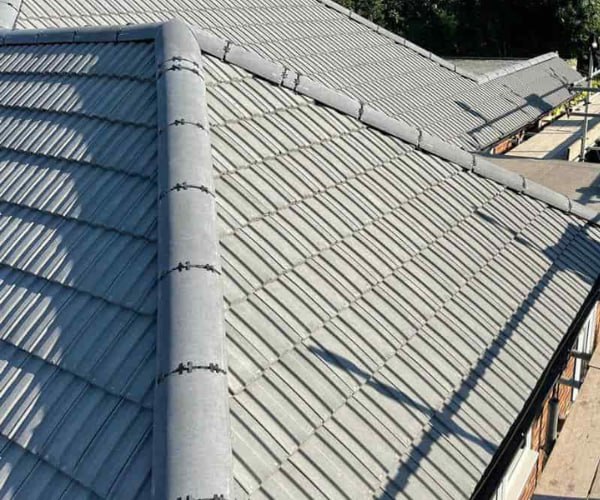Why Are My Roof Tiles Slipping? Causes and Solutions
Introduction
Slipping roof tiles are a common issue for homeowners and can lead to more significant problems if left unaddressed. A roof is designed to provide long-term protection from the elements, but when tiles become loose or dislodged, it compromises the structure’s integrity, allowing water ingress and potential damage to the property.
At LPO Roofing Kempston, we specialise in professional roof repairs and maintenance in Kempston, Bedfordshire. In this article, we explore the main causes of slipping roof tiles, the potential risks, and the best solutions to keep your roof secure and well-maintained.
Common Causes of Slipping Roof Tiles
1. Ageing Roof Materials
Over time, roofing materials naturally degrade due to exposure to weather conditions. Older roofs may have weakened tiles, underlayment, or battens, which can result in tiles becoming loose and slipping out of place. If a roof is approaching the end of its lifespan, more extensive repairs or a full roof replacement may be necessary.
2. Poor Installation
Improperly installed roof tiles are more likely to shift or fall out of place. Common installation mistakes include:
- Incorrect tile overlap, leading to weak positioning
- Insufficient or missing fixings, particularly on exposed roof sections
- Using the wrong type of tile for the roof pitch or structure
Hiring a professional roofing contractor ensures that tiles are correctly positioned and secured according to industry standards.
3. Strong Winds and Storm Damage
Extreme weather conditions, particularly strong winds and heavy rain, can loosen roof tiles over time. If tiles are not properly secured, they may become dislodged or completely fall off the roof. High winds can also lift tiles by creating upward pressure, especially if the roof lacks proper edge protection.
4. Failing or Rotten Battens
Battens are the wooden strips beneath roof tiles that provide structural support. If battens become rotten, damp, or weak due to prolonged moisture exposure, they may no longer hold the tiles in place effectively. Replacing old or damaged battens is essential to maintaining a secure roofing system.
5. Broken or Deteriorated Roof Felt
Roofing felt acts as a protective underlayment beneath tiles. Over time, it can deteriorate due to UV exposure, moisture, and temperature fluctuations. If the felt weakens, it can cause tiles to shift, especially in wet and windy conditions.
6. Movement of the Roof Structure
Structural shifts caused by temperature changes, foundation settling, or even poorly executed previous repairs can lead to tiles moving out of alignment. If the roof experiences frequent movement, professional assessment and reinforcement may be required.
7. Moss and Debris Build-Up
Moss, lichen, and debris accumulation can cause roof tiles to become loose over time. Moisture retained by moss growth can weaken the materials holding the tiles in place. Regular roof cleaning and maintenance help prevent this issue.
Solutions for Slipping Roof Tiles
1. Replacing or Securing Loose Tiles
If a few tiles have slipped, they should be repositioned and secured with appropriate fixings or adhesives. Professional roofers can inspect the surrounding tiles to ensure there are no underlying issues that could cause further slipping.
2. Checking and Replacing Roof Battens
If the battens are weakened or damaged, replacing them with treated, weather-resistant timber will provide a stronger foundation for the tiles. Properly installed battens ensure long-term stability and resistance to future movement.
3. Repairing or Upgrading Roof Underlayment
A deteriorated roofing felt or membrane should be replaced to restore the roof’s protective barrier. Modern underlayment materials offer improved durability and weather resistance, extending the life of the roof.
4. Reinforcing the Roof Against High Winds
For properties in wind-prone areas, additional securing methods, such as clips or stronger fixings, can help prevent tiles from lifting or slipping during storms. Ensuring proper edge detailing and ventilation also minimises wind pressure damage.
5. Professional Roof Inspection and Maintenance
Regular roof inspections allow homeowners to identify and address minor tile issues before they become serious. Annual maintenance checks by a professional roofing company help detect loose tiles, damaged battens, or other potential problems early on.
6. Cleaning and Moss Removal
Removing moss, algae, and debris from the roof surface prevents moisture retention and helps maintain the integrity of the tile fixings. Professional roof cleaning services use safe, non-damaging methods to prevent further wear and tear.
Why Choose LPO Roofing Kempston?
For homeowners in Kempston, Bedfordshire, LPO Roofing Kempston provides expert roof repair and maintenance services to prevent and fix slipping tiles. Our skilled team ensures that all roofing work is carried out to the highest standards, helping to extend the lifespan of your roof and protect your home from weather damage.
Conclusion
Slipping roof tiles are a warning sign that should not be ignored. Whether caused by ageing materials, poor installation, or extreme weather conditions, addressing the issue early can prevent costly repairs and structural damage. Regular inspections, proper installation, and timely maintenance are key to keeping your roof secure and functioning effectively.
If you need professional roof repairs in Kempston, Bedfordshire, contact LPO Roofing Kempston today. Our experienced team is ready to assess your roof, provide expert solutions, and ensure your home remains safe and protected.
Call us on: 01234 676 690
Click here to find out more about LPO Roofing Kempston
Click here to complete our contact form and see how we can help with your roofing needs.

